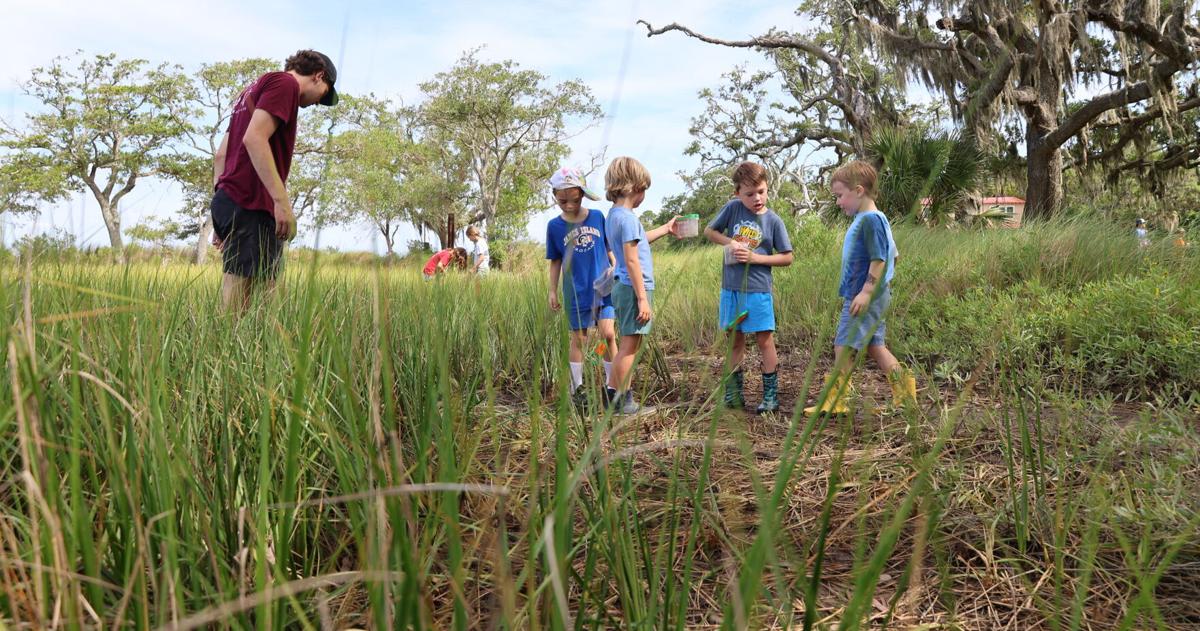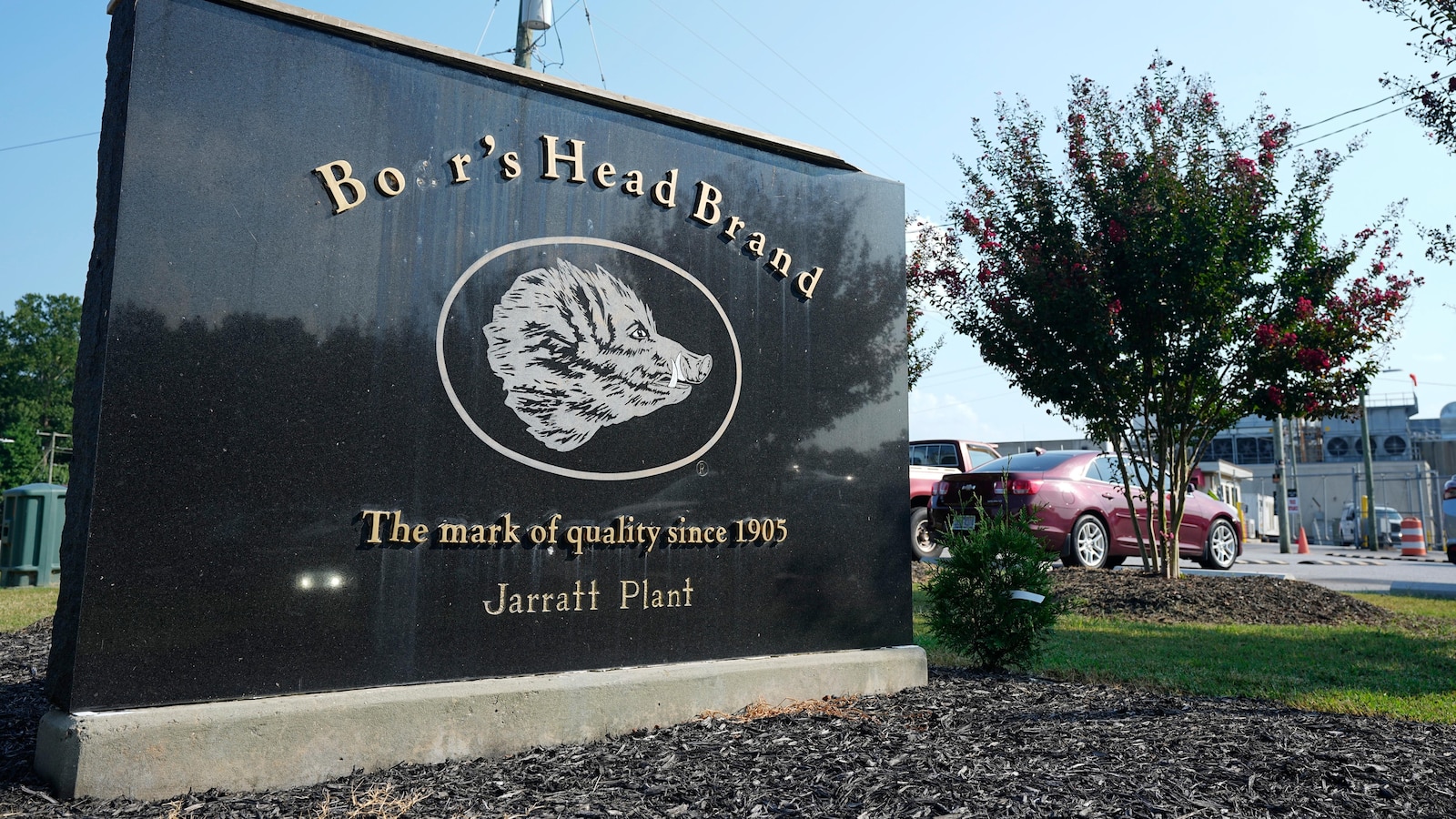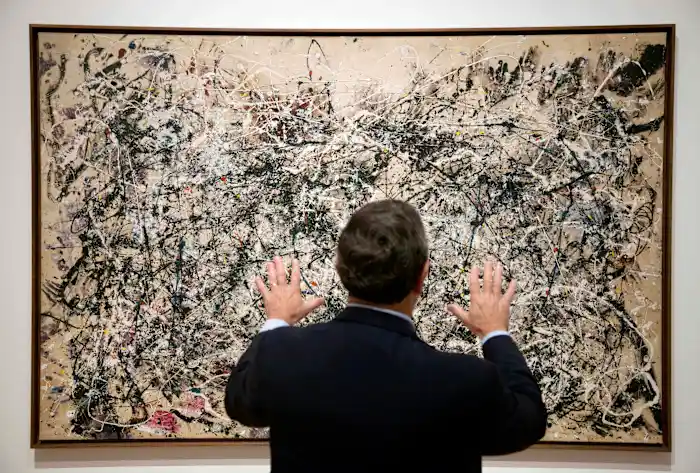
JAMES ISLAND — Motorists heading towards Folly Beach along Riverland Drive pass beneath a mile-long canopy of live oaks alongside one of James Island’s most remarkable landscapes: nearly 600 acres of undeveloped marsh and hardwood forest edging the Stono River.
Behind the nearly hidden Dill Sanctuary sign at 1163 Riverland Drive lies a rare Lowcountry swath of land that escaped the bulldozer thanks to three Charleston-born sisters: Frances, Julia and Pauline Dill.
The only structure is a two-story, clapboard farmhouse built in the early 1900s and a freestanding screened-in porch overlooking pluff mud flats where crabs scurry among marsh grass and Spanish moss waves in the breeze.
Two Civil War fortifications, earthen Battery Fort Pringle and Battery Tynes, rise from the soil, hidden inside the hardwood forest.
Developers were no doubt salivating over the riverfront trophy property until Pauline Rivers Dill’s last will and testament made front-page news.
When she died on April 12, 1985, at age 100, the last surviving sister directed that 1,149 acres of the family’s plantation — once known as Stono Farms — be donated to the Charleston Museum for a permanent wildlife refuge.
For the past 40 years, the land, which was later halved by the creation of James Island County Park, has remained just that: a wildlife sanctuary closed to the general public except for a weeklong summer camp, select school field trips and the occasional special event.
The next opportunity for the public to explore it comes soon: Community Day on Oct. 4, from 9:30 a.m.-1 p.m., a free event with guided nature walks, archaeology talks, and other tours and activities.
A legacy of philanthropy
None of the sisters had children, and all shared a lifelong passion for philanthropy.
Julia and Frances married — Julia to William Davis Rogers and Frances to I’On Rhett, a descendant of wealthy merchant and South Carolina Gov. William Aiken Jr. (Frances Dill Rhett and I’On Rhett lived in — and she ultimately donated — the Aiken-Rhett House on Elizabeth Street to the Charleston Museum in 1975, which now serves as a museum house.)
Each sister’s will left the James Island land to the surviving sister with the directive that anything that remained would go to the museum as a wildlife refuge.
Pauline Dill never married and outlived both her sisters. When her time came, she followed through with the promise the three made. It was a fitting last bequest for a woman who donated her time and effort to philanthropic causes throughout her life.
In the early- to mid-1900s, she held committee positions with the Ladies Benevolent Society, Civic Club, Nurses Committee, Carolina Art Association and the Garden Club of Charleston.
She knitted sweaters to send to British soldiers during World War II, even heading up sewing workrooms inside the historic Dock Street Theatre.
Yet it was the Charleston Museum, founded downtown in 1773 and which now has more than 2.4 million artifacts, that would become the recipient of the sisters’ considerable real estate holding for preservation.
“They were pioneers,” said Carl Borick, museum director. “Conservation has really taken off in South Carolina, and they were at the forefront.”
It was the sisters’ request that the roughly 1,149-acre land — then valued at about $6.8 million — would be transformed into a restricted recreational sanctuary “to educate persons interested in the work of the museum for field trips, research and other education purposes,” states Pauline Dill’s last will and testament.
There was also a strict provision that did not allow caged birds, animals or reptiles on the land.
About 600 acres of the Dill Plantation eventually became the James Island County Park, which, despite community uproar at the time, was a carveout expressly outlined in Pauline Dill’s will.
The remaining acres form today’s Dill Sanctuary, a vision that the museum has faithfully stewarded to preserve the land’s wilderness, history and archaeology.
“At Community Day, we will have tours of the African American cemeteries and our curator of archaeology will talk about the Battery Pringle Civil War fortifications,” Borick said. “People can hike to our wildlife pond and see the different types of birds we have.”
Centuries of history
The land’s first recorded ownership stretches back to 1698, when colonel military official Jonathan Drake acquired 310 acres that would later become known most commonly as Stono Plantation.
Over the next century, it passed through prominent families — including the Hamiltons, who hosted British troops there during the Revolutionary War and were later banished as loyalists and had the land seized — and planter Thomas Rivers Sr., who bought hundreds of acres at public auction for “1,700 guineas,” according to Charleston Museum researchers.
His son, Capt. John Rivers, inherited the land around 1830 and greatly expanded the footprint, purchasing swaths of adjacent acreage and farmed it for Sea Island cotton, indigo, vegetables and dairy products bound for Charleston’s markets using the labor of dozens of enslaved people who lived on the property.
After the Civil War, in 1867, the land passed to Rivers’ daughters: Mary Hayes Rivers and Eleanor Rivers. The latter married Joseph T. Dill.
Upon Eleanor’s death, Dill inherited the property. He and his second wife, Frances Hinson Dill, had three daughters — Frances, Julia and Pauline.
Agriculture on James Island ran deep in the Hinson family. The sisters’ uncle, William G. Hinson, owned and farmed Stiles Point Plantation, now a residential development.
While the Dill family lived South of Broad in downtown Charleston, they farmed and leased out Dill Plantation to support their livelihood.
“When the museum took over, it was farmland,” Borick said. “It was a bit of a challenge for the museum to create a wildlife refuge, as birds generally don’t like farmland, other than crows. For the first few years, the museum planted millet, which attracted birds and created habitat.”
An early sign of the land’s future as a wildlife sanctuary came in 1910, when the Natural History Society, with the blessing of the Dill family, held a Thanksgiving field trip to observe birds and other wildlife before sharing a holiday meal on the waterfront property.
Tickets to the field trip were arranged through the Charleston Museum.
Pauline Dill had carefully planned how she wanted to disperse her assets and valuables upon her death, with the majority going to nonprofit organizations, museums and historic societies. In addition to the Dill Plantation property, Pauline Dill left her 19 Legare St. property to the Charleston Museum to sell.
Her 85-page last will and testament directed monetary gifts, along with furniture, art and other valuables to a host of charitable organizations, everything itemized meticulously, down to the last piece of antique silver.
A living archive
Archaeological surveys of the Dill Plantation led by the Charleston Museum document clear evidence of occupation dating back to the 17th century covering two American wars, enslaved labor and other artifacts buried beneath layers of soil.
Historians Debi Hacker and Martha Zierden, in a 1986 published archeological survey, noted the site’s potential to provide “extensive information on the history and development of the Lowcountry,” including possible prehistoric sites beneath the Stono River bed.
The Charleston Museum’s board of directors adopted a land management plan in 2023 to enhance its wildlife habitat, including planting native species to attract the 4.3 million birds that migrate through South Carolina each year, as well as plan prescribed burns to remove harmful invasive species.
A S.C. Department of Natural Resources caretaker now resides in the old farmhouse, keeping up with maintenance and security.



